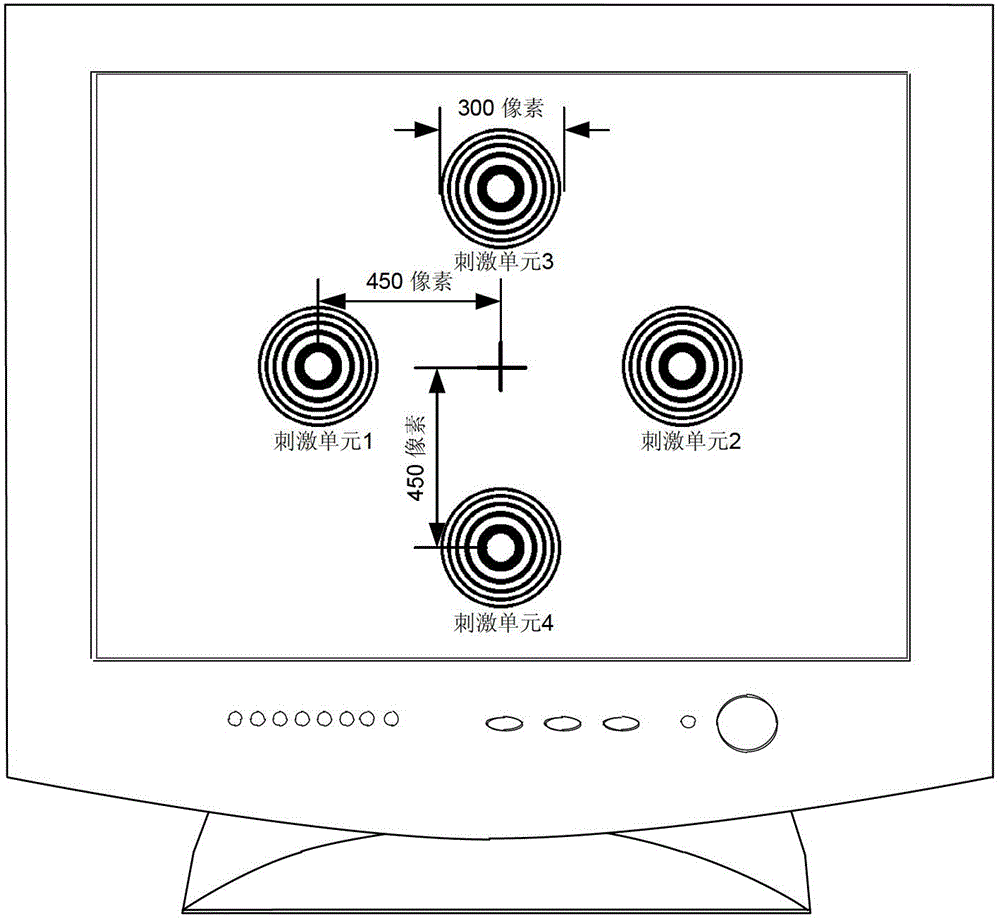Steady-state evoked potential brain-computer interface method based on motion turning vision sensing
A steady-state induction and visual perception technology, applied in the fields of neural engineering and brain-computer interface, can solve the problems of users' visual fatigue, long stimulus presentation time, and the reduction of user's brain response signal, so as to ensure efficient transmission, brain-computer interface, etc. The effect of being friendly to the computer interaction process, avoiding neural adaptation and reducing the brain response signal
- Summary
- Abstract
- Description
- Claims
- Application Information
AI Technical Summary
Problems solved by technology
Method used
Image
Examples
Embodiment Construction
[0042] The present invention will be further described in detail below in conjunction with the accompanying drawings and embodiments.
[0043] A steady-state evoked potential brain-computer interface method based on visual perception of motion reversal, comprising the following steps:
[0044] Step 1, refer to figure 1 , place measuring electrodes at PO7, Oz, and PO8 in the visual occipital area of the user's head, place reference electrodes at A1 or A2 on one side of the earlobe, and place ground electrodes at Fpz on the forehead of the user's head. The electrical signal is sent to the computer after amplification and analog-to-digital conversion;
[0045] Step 2, refer to figure 2 with image 3 , four Newton ring motion stimulation units that carry out steady-state oscillatory motion according to different flipping frequencies are presented to the user through the computer screen at the same time. The left, right, up and down positions are displayed on the computer sc...
PUM
 Login to View More
Login to View More Abstract
Description
Claims
Application Information
 Login to View More
Login to View More - R&D
- Intellectual Property
- Life Sciences
- Materials
- Tech Scout
- Unparalleled Data Quality
- Higher Quality Content
- 60% Fewer Hallucinations
Browse by: Latest US Patents, China's latest patents, Technical Efficacy Thesaurus, Application Domain, Technology Topic, Popular Technical Reports.
© 2025 PatSnap. All rights reserved.Legal|Privacy policy|Modern Slavery Act Transparency Statement|Sitemap|About US| Contact US: help@patsnap.com



